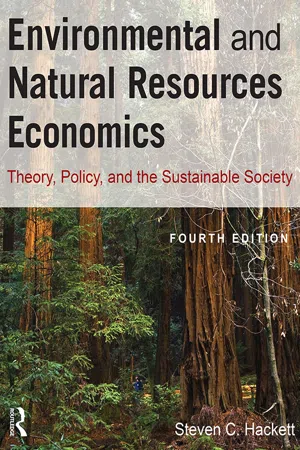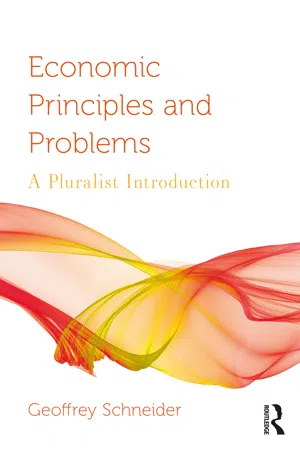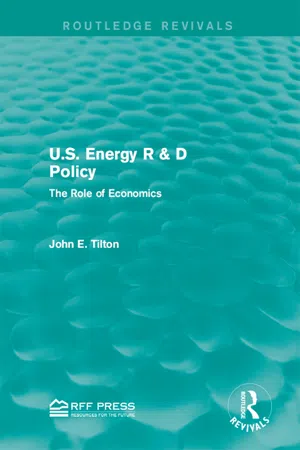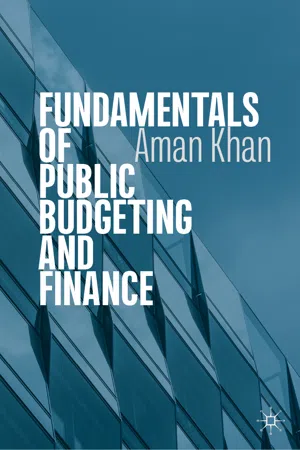Economics
Government Intervention in the Market
Government intervention in the market refers to actions taken by the government to influence the functioning of markets. This can include policies such as taxation, subsidies, price controls, and regulations aimed at correcting market failures, promoting competition, or addressing social and economic objectives. Government intervention can impact the allocation of resources, distribution of income, and overall economic efficiency.
Written by Perlego with AI-assistance
Related key terms
10 Key excerpts on "Government Intervention in the Market"
- eBook - ePub
Environmental and Natural Resources Economics
Theory, Policy, and the Sustainable Society
- Steven Hackett, Sahan T. M. Dissanayake(Authors)
- 2014(Publication Date)
- Routledge(Publisher)
Chapter 3 describes the conditions required for a well-functioning competitive market to be efficient, along with the various kinds of market failures such as pollution harms or monopolization that occur when one or more of these requirements is not met. In the context of substantial market failures, the issue is to determine the appropriate form (and extent) of government intervention. One way to resolve these market failures is to regulate the market economy, which is ultimately a reformist agenda. Such an approach can retain the strong incentives for innovation and competitiveness that derive from private ownership. But private owners may attempt to elude detection and enforcement, resulting in imperfect control. Another form of intervention is direct government ownership of business enterprises, a more radical agenda. Such an approach provides much stronger government control over business decisions, but it may dilute the incentive for cost minimization, innovation, and competitiveness.You Decide
In the context of substantial market failures, which form of intervention do you think is best? What are the relevant trade-offs?Perspectives on Market Failures and Government Intervention
As we can see, there are almost no examples of real-world markets that do not have some degree or another of market failure, often of various dimensions and degrees. From an economic perspective, then, there is potential for regulatory intervention of some kind to resolve market failures in most markets. Such intervention, however, can itself create new problems and distortions that result in government failure. Thus, when we see an opportunity for a regulatory intervention because of market failure, it is also worthwhile to consider whether the form of intervention being contemplated truly makes us better off. The particular form that regulations take may at times be more a reflection of political expediency than economic efficiency, a condition sometimes referred to as government failure. We will discuss this point in Chapter 8 , which addresses the topic of political economy, and in Chapter 10 , which focuses on incentive regulation.Government FailureA circumstance in which policymakers fail to craft regulatory interventions that enhance the efficiency of market processes. For example, policymakers may attempt to craft regulations such as Pigouvian taxes to resolve market failures, but political influence may distort the regulation to such an extent that the regulation creates additional inefficiencies. - eBook - ePub
Japan's Interventionist State
The Role of the MAFF
- Aurelia George-Mulgan(Author)
- 2004(Publication Date)
- Routledge(Publisher)
Direct market intervention entails government participation in markets through the bureaucratic ministries. It usually involves state trading of some sort (the purchase and sale of goods), or conducting businesses (such as managing state-owned forests), or providing services such as banking, insurance, postal delivery and so on. In some cases, the government may enjoy a monopoly of certain markets; in other cases, it may share markets with other entities, including quasi-public bodies and private sector enterprises. Whatever the arrangement, the result is that the state exercises varying degrees of control over the operation of the markets in question.Regulatory intervention involves indirect government control and management of economic and social activities. In fact, direct participation in markets by government ministries is almost always just one facet of a much wider and more complex system of regulatory intervention in which the operations of ministries as market actors are supplemented by a host of controls and rules over other participants in the same market, including private sector actors.Regulation has no strict legal definition in Japan, but is understood in a quasi-legal sense to mean ‘an activity by which the government directly and authoritatively restricts the people’s (or businesses’) rights or puts duties on them’.1 In the context of reports emanating from the government’s administrative reform (gyōsei kaikaku ) councils in the late 1980s, regulation was ‘defined, in general terms, as intervention of national or local government to [sic .] the activities of private enterprises or the people in order to realize specific policy objectives’.2Economic regulations can be distinguished from social regulations. Economic regulations entail government intervention in markets through the imposition of controls over market actors. In this case, the government makes and administers rules that control the behaviour of market players. These players may be either private sector producers, companies and individuals, or quasi-public entities. Economic regulations involve - eBook - ePub
Microeconomic Principles and Problems
A Pluralist Introduction
- Geoffrey Schneider(Author)
- 2024(Publication Date)
- Routledge(Publisher)
PART V Government intervention in microeconomic markets DOI: 10.4324/9781003368441-23 Part V focuses on the myriad roles that government policy plays in microeconomic markets. An economic system is a human creation, and governments set the rules of the game, determining which types of economic activities are acceptable and which types are not. Will we allow child labor to make our products, or should our government prevent such activities? How much leeway should firms have when it comes to polluting the environment? And so on. Thus, the degree and type of government intervention in microeconomic markets is a fundamental characteristic of an economic system. As an example, consider Chapter 19, which takes up market failure and government failure. Left to their own devices, capitalist markets exhibit a number of destructive market failures. Firms sometimes produce unsafe products such as tainted meat. Workers can be exploited and markets can generate inequality and poverty. Huge firms can dominate markets and ruin the environment. Solving these problems requires carefully designed government policy. Yet, sometimes the government can create problems when it intervenes, resulting in government failure. Chapter 20 takes up the economics of the environment and climate change. Ecological economists take a political economy approach to the study of the environment and view the economic system as situated within a natural environment. We ignore the natural environment at our peril. Environmental economists take a mainstream economics approach and focus more narrowly on the optimal level of pollution abatement using cost–benefit analysis. Both ecological and environmental economists advocate policies to reduce greenhouse gas emissions, such as a carbon tax or a cap-and-trade system - eBook - ePub
Economic Principles and Problems
A Pluralist Introduction
- Geoffrey Schneider(Author)
- 2021(Publication Date)
- Routledge(Publisher)
Part V Government intervention in microeconomic markets DOI: 10.4324/9781315636924-23 Part V focuses on the myriad roles that government policy plays in microeconomic markets. An economic system is a human creation, and governments set the rules of the game, determining which types of economic activities are acceptable and which types are not. Will we allow child labor to make our products, or should our government prevent such activities? How much leeway should firms have when it comes to polluting the environment? And so on. Thus, the degree and type of government intervention in microeconomic markets is a fundamental characteristic of an economic system. As an example, consider Chapter 19, which takes up market failure and government failure. Left to their own devices, capitalist markets exhibit a number of destructive market failures. Firms sometimes produce unsafe products such as tainted meat. Workers can be exploited and markets can generate inequality and poverty. Huge firms can dominate markets and ruin the environment. Solving these problems requires carefully designed government policy. Yet, sometimes the government can create problems when it intervenes, resulting in government failure. Chapter 20 takes up the economics of the environment and climate change. Ecological economists take a political economy approach to the study of the environment and view the economic system as situated within a natural environment. We ignore the natural environment at our peril. Environmental economists take a mainstream economics approach and focus more narrowly on the optimal level of pollution abatement using cost–benefit analysis. Both ecological and environmental economists advocate policies to reduce greenhouse gas emissions, such as a carbon tax or a cap-and-trade system - eBook - ePub
- Rob Dransfield(Author)
- 2013(Publication Date)
- Routledge(Publisher)
Free markets in the modern world need help to exist and flourish. Perhaps ironically they need the help of government to make sure that free market conditions are in place. The government then uses a range of agencies to provide the enabling structures to secure free and competitive markets. These agencies include the law courts and specific bodies with a remit to enable competition, such as the Competition Commission and the Office of Fair Trading (see below).Government intervention in markets sets out to achieve two main purposes:- To make markets work more effectively. This will involve making sure that there is an appropriate framework in the market. In simple terms the market will need to be free and open so that competition can take place. This will involve establishing the fundamental ‘rule of law’ in which contracts are upheld, and property rights recognized. This will be backed up by competition and consumer protection law. Businesses will need to be free to compete with each other without impediment and consumers should be able to exercise their free choice without being coerced or defrauded by unscrupulous suppliers.
- To influence market outcomes. This will include minimizing the external impacts of markets (e.g. pollution and waste). The government will also use markets to deliver public services such as state education and refuse collection.
The government can intervene in markets through direct or indirect participation (see Table 7.1 ).Table 7.1 Government intervention in markets through direct or indirect participationDirect participation Indirect participation - As a supplier (e.g. by maintaining the railway network in the UK)
- By providing state education, etc.
- As a buyer of goods (e.g. purchasing medical supplies through the NHS, by commissioning and purchasing ready-made films, documentaries, etc. through the BBC)
- Through regulation of industries (e.g. regulation of public utilities) and by establishing the rules through which firms can compete with each other (as well as consumer protection) Through taxation and subsidies
- eBook - ePub
U.S. Energy R & D Policy
The Role of Economics
- John E. Tilton(Author)
- 2015(Publication Date)
- Routledge(Publisher)
This is not to say that the government has no role to play in economic activity. To facilitate the efficient functioning of the market, it should provide political stability, money, laws (governing, among other things, contracts, competitive behavior, and the protection of private property), as well as the police and courts needed to enforce the laws. With the advent of Keynesian economics, it was given the responsibility of maintaining full employment, stable prices, and economic growth to the extent possible with monetary and fiscal policy (but not price controls, at least not on a regular basis). For reasons of equity, the government may also have to alter the distribution of income produced by the marketplace.In addition, economists recognize that individual markets may suffer imperfections necessitating some government intervention. The possession of market power by one or more firms and costs of production, such as pollution, that are not included in product prices are examples. In such cases, the tendency of economists is to advocate that the government change the incentives facing private decision makers so that they behave as if they were in a perfectly functioning market. This can involve eliminating the market imperfection (or preventing its development), or alternatively offsetting the distortions that a market imperfection produces on incentives. In the antitrust field, merger restrictions are an example of the first approach, price fixing regulations of the second.This method of dealing with market failures is reasonable when market imperfections are few in number and their impact easily understood. But when the imperfections are many and their effects on behavior complex and interdependent, this approach falters because the behavior that a perfectly functioning market would produce is difficult to discern. In such situations comprehensive planning including the setting of public priorities is often a prerequisite to determining the appropriate extent and means of government intervention.1 - eBook - ePub
Understanding Business: Markets
A Multidimensional Approach to the Market Economy
- Vivek Suneja, Vivek Suneja(Authors)
- 2005(Publication Date)
- Routledge(Publisher)
When markets fail by Sloman and Sutcliffe explores the various sources and dimensions of market failure. Markets may fail to generate socially efficient outcomes and may fail to deliver equitable outcomes. Various factors may lead to social inefficiencies, these include: externalities; public goods; the behaviour of monopolies and oligopolies; ‘inappropriate’ consumer preferences; lack of information; uncertainty; and the immobility of factors of production. Inequitable outcomes may be generated by an inequitable initial distribution of resources, unequal access to career advancing opportunities or an unequal distribution of bargaining power. Sloman and Sutcliffe investigate whether and how some of these market failures can be remedied, and what role the government can play in this process. The state may potentially use a wide array of instruments to correct market failure, such as the use of taxes and subsidies, provision of missing information, the creation or alteration of property rights, the establishment of laws and bodies to regulate economic behaviour and the direct provision of certain goods and services. State intervention is not without its problems though. Just as markets can fail, so can governments. ‘Government failure’ may be caused by a range of factors, such as the costs involved in gathering the required information, the inefficiency that may result due to lack of market incentives and the absence of adequate accountability. In recent years, many countries have reduced the degree of state intervention in their economies as a consequence of such considerations. They have also experimented with newer forms of state intervention, such as trying to regulate the production of certain goods and services rather than providing them directly through public enterprises. The results of this experimentation have been mixed, and the challenge remains as how to devise an appropriate mix of market and non-market mechanisms that helps achieve socially desired objectives. One also needs to consider whether it is desirable and realistic to expect that firms should behave in a socially responsible fashion that takes into account not solely the interests of shareholders but the concerns of other stakeholders as well.Passage contains an image
7
WHEN MARKETS FAIL*
John Sloman and Mark Sutcliffe
MARKETS AND THE ROLE OF GOVERNMENT
Government intervention and social objectives
In order to decide the optimum amount of government intervention, it is first necessary to identify the various social goals that intervention is designed to meet. Two of the major objectives of government intervention identified by economists are social efficiency and equity.Social efficiency
If the marginal benefits to society (MSB) of producing (or consuming) any given good or service exceed the marginal costs to society (MSC), - eBook - ePub
The Rhetoric of the Right
Language Change and the Spread of the Market
- David George(Author)
- 2012(Publication Date)
- Routledge(Publisher)
interference in the act has occurred is not to cast any doubts on the wisdom of the act. Here we have a case in which the police are very much outsiders to the action going on but from a social standpoint are welcomed in their action.When it comes to government, however, it is readily apparent that the interventions and interferences are not always welcomed. Writing in the 1920s, the famed Austrian economist Ludwig von Mises offered the following definition: “Intervention is a limited order by a social authority forcing the owners of the means of production and entrepreneurs to employ their means in a different manner than they otherwise would” (1977, 20).On the same page he turns attention to a particular type of government action and tells his reader that “price controls [are] ‘interference with the structure of prices’” (1977, 20). That he is using intervention and interference interchangeably becomes clear four pages later when he titles a new section “Interference with prices” and proceeds to announce in the very first sentence that “price intervention [emphasis added] aims at setting goods prices that differ from those the unhampered market would set” (1977, 24). That intervention (and the more negative interference ) are, according to von Mises, worth avoiding becomes as clear as can be two pages after this with the following claim: “There is no … choice: government either abstains from limited interference with the market forces, or it assumes total control over production and distribution. Either capitalism or socialism; there is no middle of the road” (1977, 26). The data in Tables 2.21 and 2.22 showed that neither intervene nor interfere are used as favorably as the simple word act , and also showed that interfere was less favorable than intervene - eBook - ePub
- Aman Khan(Author)
- 2019(Publication Date)
- Palgrave Macmillan(Publisher)
general equilibrium in the market does not mean that the markets are independent of each other; in reality, they are interdependent in that what happens in one market can easily affect the equilibrium in another market. Thus, if the demand for a commodity, say coffee, increases, it will not only increase the price of coffee, but will also increase the demand for tea (a close substitute), assuming more consumers will move to tea. Similarly, if the demand for input factors, say capital, in one market increases, there will be less capital available for investment in another market, and so forth. In other words, a change in demand and supply will change the equilibrium condition in a given market, as well as in all other markets with which it has a direct or indirect relationship until a new equilibrium is established.1.2 Market Failure and the Need for Government Intervention
As simple and uncomplicated as the system appears, it also has a tendency to create certain conditions in the marketplace that economists call “anomalies,” which, if left unchecked, will lead to “market failure ” (Bator 1958 ). The failure occurs because of market’s inability (1) to operate efficiently, (2) to deal with aggregate (macro) economic problems, (3) to provide goods that are necessary for collective consumption called public goods, and (4) to regulate itself. Richard Musgrave , in his classic text “The Theory of Public Finance,” recognized three essential functions a government performs in response to these failures—allocation, distribution, and stabilization (Musgrave 1959 ). The allocation function , according to Musgrave , deals with the process by which the resources of society are divided between private and public goods. The distribution function adjusts the inequities in income and wealth to ensure that they conform to what society considers “fair” or “equitable,” while the stabilization function deals with measures necessary to maintain high employment, a reasonable degree of price stability, economic growth , and balance of payment equilibrium. The fourth function—regulation—is a process that regulates the behavior of firms and businesses to ensure competition in the marketplace.3 - eBook - ePub
- Runa Sarkar, Anup Sinha(Authors)
- 2017(Publication Date)
- Business Expert Press(Publisher)
CHAPTER 7 Market Failures and Public Policy Interventions In a market economy, goods and services are produced at a cost by the producer and sold to the consumer for a price. The good normally uses up resources such as raw material, labor, and technology, and they are all paid for. When the buyer buys the good, he or she pays the price to transfer the property right to himself or herself. Markets, therefore, function on the basis of prices and costs and are based on the concept of private property. Sometimes, in the making of a good, a by-product or waste may be created, which has adverse effects on people who are neither the producers nor consumers of the good. This third person, or society at large, has to pay a cost to mitigate the effect of the by-product, for example, toxic waste or a greenhouse gas. As a result of producing and consuming a good, society has to incur the cost of the pollutant, or a bad (opposite of good). We say the market fails in such a situation because the sum of the benefits that the producer and consumer derive does not account for the costs incurred by the affected third parties or society. On the other hand, there are instances of goods that are usually naturally available in abundance, which are owned by everybody and no private property rights exist, for instance, the air we breathe or the high seas. In such situations, there is no market for these goods defined by costs and prices, and there is a tendency to overuse the good, and hence leads to congestion or deterioration of the usefulness of the good. Both these situations create environmental stress. For instance, increased pollution in the first case and overfishing in the oceans in the second lead to such stress
Index pages curate the most relevant extracts from our library of academic textbooks. They’ve been created using an in-house natural language model (NLM), each adding context and meaning to key research topics.









